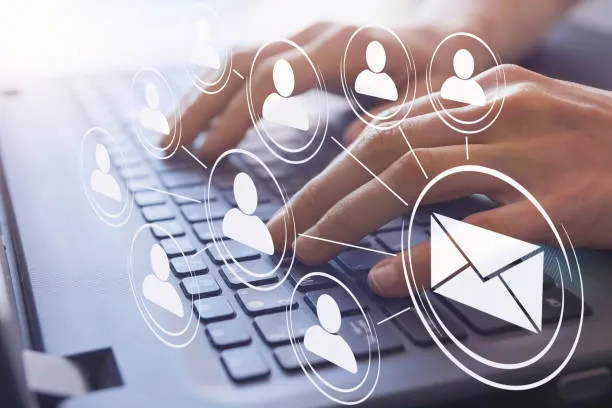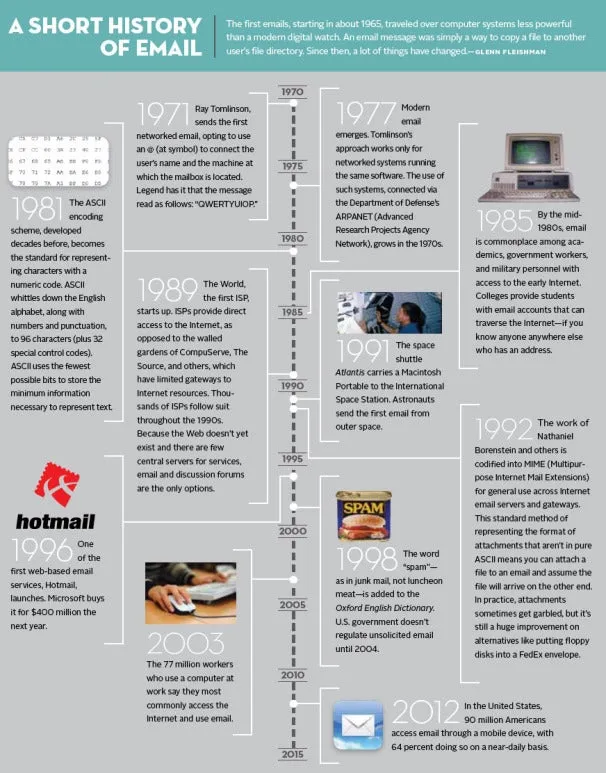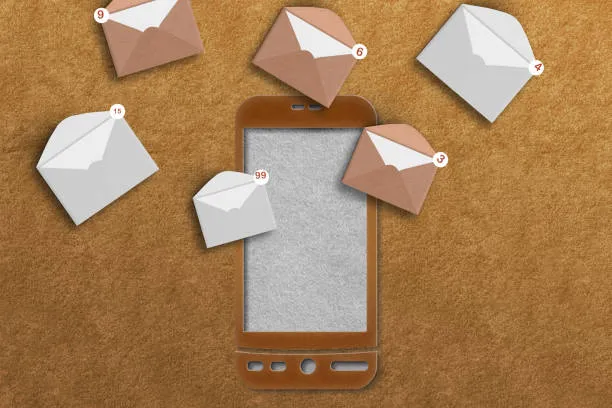Is EMAIL Services getting Antiquated 😬
 Ayan
Ayan
Email, short for "electronic mail," has become a versatile tool for both formal and informal communication, as well as a means for securing official documentation. Its origins can be traced back to the early days of the internet. In the 1960s, early computer scientists developed systems to exchange messages between users on shared mainframe computers, but it wasn’t until 1971 that Ray Tomlinson sent the first networked email using the "@" symbol, marking the true birth of modern email.
"From Mainframes to Inboxes: The Evolutionary Journey of Email"
Initially, email was a tool primarily used in academic and military settings, allowing professionals to share research and data quickly. Over the following decades, with the rise of personal computers in the 1980s and the internet explosion in the 1990s, email became more widespread in both business and personal settings.
In the corporate world, email became the preferred mode of communication for formal exchanges—replacing traditional letters and memos—due to its speed and ability to track conversations. It also became integral to securing and archiving official documentation, as the ease of attachment and encryption allowed important files to be shared and preserved digitally. Meanwhile, for informal communication, it replaced handwritten letters, offering a quicker way to stay connected with friends and family.
Today, email remains a dual-purpose tool—used for everything from legal contracts and professional correspondences to casual messaging—reflecting its evolution from a niche academic tool to a global communication standard. Its historic development has shaped the way individuals and organizations handle both everyday and critical exchanges.

The Rise of Alternatives to Email
Over the past decade, various communication platforms have emerged, promising quicker and more streamlined ways of connecting with others. For example:
Instant Messaging (IM): WhatsApp, Facebook Messenger, and Telegram have revolutionized personal communication. They offer real-time interactions, group chats, and multimedia sharing, features that are more engaging and accessible than traditional email.
Collaboration Tools: Slack, Microsoft Teams, and Zoom have taken over business communication, especially in remote work environments. These tools offer project-based channels, video conferencing, file sharing, and integrations with productivity tools like calendars and task managers. They provide an all-in-one solution for teams to stay connected without needing to check their inboxes constantly.
Social Media: Platforms like LinkedIn, X, and Instagram have replaced email in certain aspects, such as networking and customer outreach. Brands and individuals can now reach a broader audience with fewer barriers.
Where Email Struggles 🤔
However, it would be naive to ignore the growing criticisms of email. As the digital landscape evolves, email faces several challenges:
- Overload and Spam: The biggest downside to email is the overwhelming number of messages most people receive daily, a large percentage of which are spam or irrelevant. According to Statista, over 50% of global email traffic is spam. Sorting through emails to find the important ones can be a time-consuming task, leading to what many refer to as "email fatigue."
- Lack of Real-Time Interaction: One major disadvantage of email is its lack of immediacy compared to instant messaging tools. In fast-paced work environments, waiting for email responses can slow down decision-making, whereas chat tools like Slack or Microsoft Teams offer instantaneous feedback.
- Complexity in Collaboration: Collaboration through email is often cumbersome, with long threads, multiple attachments, and the risk of confusion when managing versions of shared documents. Collaboration platforms like Google Workspace and Microsoft 365 have shifted away from email as a central hub for group work, providing more efficient ways to co-edit documents, share resources, and communicate in real-time.
Why Email is Still Relevant
Despite the competition, email remains a powerful tool. In fact, for many, it’s indispensable in both professional and personal settings. Here’s why email is far from obsolete:
1. Formality and Professionalism: Email maintains a level of professionalism that’s difficult to achieve with instant messaging or social media. Whether you’re sending a job application, negotiating a business deal, or issuing an official company statement, email provides the necessary structure and tone.
2. Documentation and Record Keeping: Email offers a reliable way to store communication records, important documents, and formal agreements. It's easier to archive and search through past emails than to sift through chat histories in apps like WhatsApp or Slack.
3. Global Standard: Email is universally accessible. Anyone with an internet connection can use email, regardless of the platform they’re on. Unlike proprietary platforms like Slack, which require specific software or subscriptions, email works across devices, operating systems, and geographies.
4. Marketing Powerhouse: Email marketing remains one of the most effective digital marketing strategies. According to recent studies, email marketing offers a return on investment (ROI) of around $42 for every dollar spent. It is used for newsletters, promotions, customer retention campaigns, and lead generation with measurable impact.
5. Security and Authentication: Many online services still rely on email as the primary method for account authentication, password recovery, and security alerts. The idea of using WhatsApp or Facebook Messenger for these purposes is still less reliable due to privacy and control concerns.
The Future of Email: Evolving, Not Obsolete
Rather than becoming obsolete, email is evolving. Companies like Google and Microsoft are integrating new features to adapt email to modern workflows. For instance, Gmail now integrates with Google Workspace, enabling users to collaborate on documents directly within the email platform. Similarly, Microsoft has enhanced Outlook with integrations from Teams and OneDrive to create a seamless ecosystem.
There’s also a trend toward decluttering the email experience with tools like AI-powered inbox management, better spam filtering, and features like “Focused Inbox” in Outlook, which prioritizes important messages over less critical ones. These improvements are geared towards making email more user-friendly, efficient, and relevant.
Additionally, email is merging with other forms of communication. For example, platforms like Slack now offer "email-like" functionality for external communication. This hybrid approach may represent the future of professional correspondence, where the formality of email meets the efficiency of instant messaging.
Conclusion
Email is far from obsolete. While it's true that email faces competition from instant messaging, social media, and collaboration platforms, it remains a vital tool for formal communication, record-keeping, and marketing. Its universality and adaptability mean that email will continue to be relevant, even if its role in the digital landscape shifts. As long as businesses and individuals need formal, organized, and secure communication, email will have a place in our inboxes—albeit with some much-needed modernization.

So, is email Antiquated? Not yet. It’s evolving with the times.
Subscribe to my newsletter
Read articles from Ayan directly inside your inbox. Subscribe to the newsletter, and don't miss out.
Written by

Ayan
Ayan
"I post blogs here in a simple way, so that a 5-year-old can read and understand them."